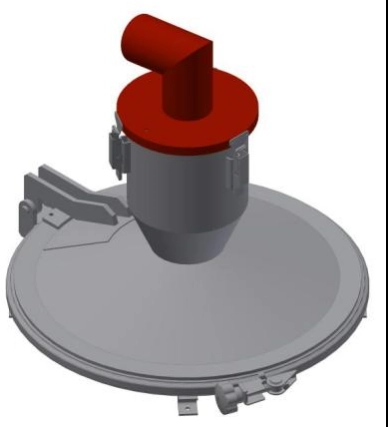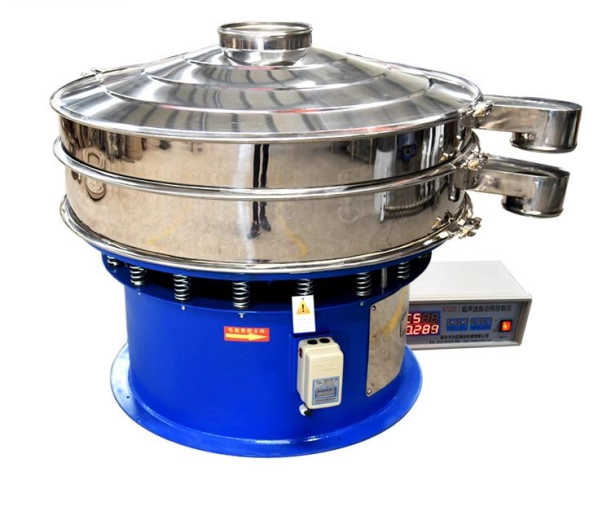Content Menu
● Understanding Powder Sieve and Hopper Systems
>> What Are Powder Sieve Systems?
>> What Role Do Hopper Systems Play?
● The Challenges in Manual Operation of Powder Systems
>> Inefficiencies and Human Error
>> Safety Risks and Contamination
● How Automation Transforms Powder Sieving and Hopper Processes
>> Integrated Flow Control and Monitoring
>> Enhanced Precision and Repeatability
>> Real-Time Data Collection and Analysis
● Key Benefits of Automation in Powder Systems
>> Increased Productivity and Throughput
>> Improved Product Quality and Consistency
>> Enhanced Safety and Compliance
>> Reduced Labor Costs and Operational Expenses
● Automation Technologies Used in Powder Sieve and Hopper Systems
>> Programmable Logic Controllers (PLCs)
>> Sensors and Instrumentation
>> Human-Machine Interface (HMI) Panels
>> Advanced Control Algorithms and Machine Learning
● Case Studies: Automation Success in Different Industries
>> Pharmaceutical Industry
>> Food Processing Sector
>> Chemical Manufacturing
● Best Practices for Implementing Automation in Powder Systems
>> Thorough Needs Assessment
>> Selecting Compatible Equipment
>> Staff Training and Change Management
>> Routine Maintenance and Calibration
● Future Trends in Automation for Powder Processing
>> IoT and Industry 4.0 Integration
>> Robotics and Autonomous Cleaning Systems
>> AI-Driven Process Optimization
● Frequently Asked Questions
>> 1. What is the primary advantage of automating powder sieve systems?
>> 2. How does automation enhance safety in hopper systems?
>> 3. Can automated powder systems handle different types of powders?
>> 4. What maintenance is required for automated powder sieves and hoppers?
>> 5. How does automation affect production costs?
In today's fast-moving industrial landscape, the integration of automation into powder sieve and hopper systems has become essential. These systems play a crucial role in the manufacturing and processing of powders across various industries, including pharmaceuticals, food production, chemicals, and more. Automation not only enhances operational efficiency but also ensures product quality, safety, and consistency. This article delves into why automation matters in powder sieve and hopper systems, exploring benefits, technological advancements, and practical applications.

Understanding Powder Sieve and Hopper Systems
What Are Powder Sieve Systems?
Powder sieve systems are used for separating and classifying powders into different particle sizes. They remove oversized lumps and foreign materials to ensure powder uniformity, critical for consistent product performance. Sieves can be rotary, vibratory, or ultrasonic, depending on the application requirements.
What Role Do Hopper Systems Play?
Hopper systems serve as temporary storage and controlled dispensing units for powders. They regulate the flow of materials into processes such as mixing, packaging, or further processing in a precise and consistent manner. This control is vital for minimizing waste and maintaining production accuracy.
The Challenges in Manual Operation of Powder Systems
Inefficiencies and Human Error
Manual handling of powder sieves and hoppers often involves tedious tasks such as monitoring sieve integrity, cleaning, and overseeing powder flow. Human error can lead to inconsistencies in particle size, contamination, or even blockages, disrupting the production line.
Safety Risks and Contamination
Powder processing can generate dust, which poses explosion hazards and health risks to operators. Manual systems lack integrated safety controls, increasing the chance of accidents and contamination that could compromise product quality.
How Automation Transforms Powder Sieving and Hopper Processes
Integrated Flow Control and Monitoring
Automated systems use sensors and intelligent controllers to monitor powder flow continuously. They can adjust hopper discharge rates in real-time to match process demands, ensuring smooth operation without interruptions.
Enhanced Precision and Repeatability
Automation ensures that sieving is conducted under optimal parameters consistently. This level of precision enhances the quality and uniformity of powders, reducing defective products and waste.
Real-Time Data Collection and Analysis
With automation, critical processing parameters such as flow rate, particle size distribution, and hopper fill levels are tracked and recorded. This data provides valuable insights for process optimization, preventive maintenance, and compliance with regulatory standards.
Key Benefits of Automation in Powder Systems
Increased Productivity and Throughput
Automated systems can run continuously with minimal human intervention, significantly increasing throughput. By reducing downtime and speeding up processes like sieve cleaning and hopper refilling, productivity receives a substantial boost.
Improved Product Quality and Consistency
Consistent particle size and controlled powder flow contribute to higher product quality. Automation minimizes variability, ensuring that final products meet strict quality requirements and reduce customer complaints.
Enhanced Safety and Compliance
Automated powder sieving and hopper systems often include dust extraction and containment features along with explosion-proof equipment. These measures protect workers and help companies comply with stringent safety regulations.
Reduced Labor Costs and Operational Expenses
By automating routine monitoring and control tasks, manufacturers reduce dependency on manual labor. This shift cuts labor costs and lowers expenses related to errors, rework, and downtime.
Automation Technologies Used in Powder Sieve and Hopper Systems
Programmable Logic Controllers (PLCs)
PLCs act as the brain of automated systems, managing sensors and actuators for precise control. They enable rapid adjustments and seamless integration with other production line components.
Sensors and Instrumentation
Various sensors such as load cells, ultrasonic level sensors, and particle size analyzers provide real-time data critical for efficient system operation.
Human-Machine Interface (HMI) Panels
HMI panels offer operators user-friendly interfaces to monitor system status, configure parameters, and receive real-time alerts without manual intervention at the equipment.
Advanced Control Algorithms and Machine Learning
Cutting-edge automation systems may incorporate machine learning algorithms that optimize sieving and hopper functions by learning from historical data and adapting to varying powder characteristics.
Case Studies: Automation Success in Different Industries
Pharmaceutical Industry
For pharmaceutical powders, where purity and precision are paramount, automation ensures consistent particle size and contamination control. Automated sieving reduces manual contact, minimizing contamination risk and adhering to Good Manufacturing Practices (GMP).
Food Processing Sector
In food manufacturing, automation aids in maintaining hygiene and speeding up production. Automated hopper systems regulate ingredient flow into mixers with high accuracy, maintaining recipe consistency and improving product taste and texture.
Chemical Manufacturing
Chemical powders require tight control for safety and effectiveness. Automated systems prevent cross-contamination, control dust emission, and maintain accurate dosing for chemical reactions.
Best Practices for Implementing Automation in Powder Systems
Thorough Needs Assessment
Evaluating production volume, powder characteristics, and existing workflows helps define the automation requirements precisely.
Selecting Compatible Equipment
Integration compatibility with existing machinery and control systems is critical to ensure smooth adoption and operation.
Staff Training and Change Management
Proper training prepares operators and maintenance teams to handle automated systems effectively, ensuring a seamless transition and ongoing productivity.
Routine Maintenance and Calibration
Even automated systems require scheduled maintenance and calibration to sustain accuracy and prevent unexpected failures.
Future Trends in Automation for Powder Processing
IoT and Industry 4.0 Integration
The Internet of Things (IoT) enables remote monitoring and smart maintenance, providing real-time alerts and predictive analytics to avoid downtime.
Robotics and Autonomous Cleaning Systems
Robotic arms and autonomous cleaning units will reduce human exposure to powders and increase cleaning efficiency, especially in sterile or hazardous environments.
AI-Driven Process Optimization
Artificial intelligence (AI) can analyze vast datasets to refine sieving and hopper operation dynamically, adapting to raw material variations and enhancing throughput.

Frequently Asked Questions
1. What is the primary advantage of automating powder sieve systems?
The primary advantage is improved consistency and quality of the sieved powder, reducing contamination and ensuring uniform particle size with minimal manual intervention.
2. How does automation enhance safety in hopper systems?
Automation reduces human exposure to hazardous powders and integrates safety controls such as dust containment and explosion prevention to protect operators.
3. Can automated powder systems handle different types of powders?
Yes, modern automation systems can be calibrated and programmed to adapt to various powder properties, including flow characteristics and particle sizes.
4. What maintenance is required for automated powder sieves and hoppers?
Routine cleaning, sensor calibration, and software updates are essential to maintain accuracy and prevent downtime.
5. How does automation affect production costs?
While initial setup costs may be high, automation significantly lowers labor costs, waste, and product defects, leading to substantial savings over time.
Hot Tags: China, Global, OEM, private label, manufacturers, factory, suppliers, manufacturing company










































 .
. 